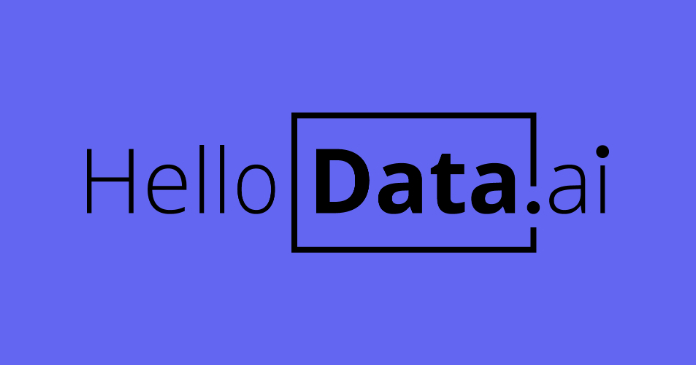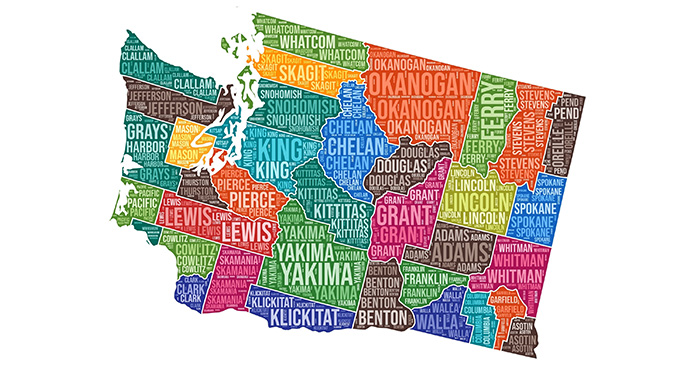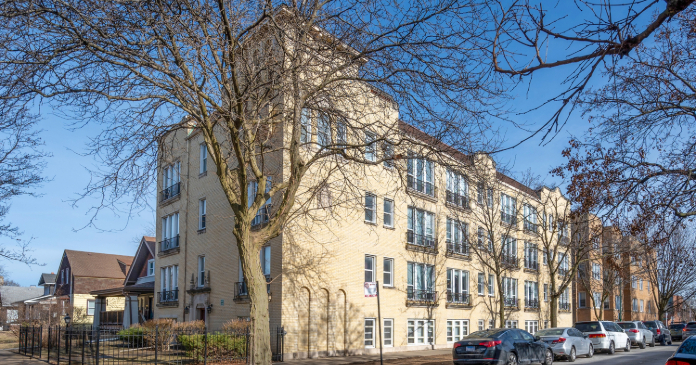Revenue management has been an indispensable price optimization tool in multifamily since the launch of Lease Rent Optimizer (LRO) and YieldStar 15 years ago, both developed in conjunction with large multifamily property REITs and now both ensconced beneath the RealPage banner.
Today, 25 percent of the multifamily industry is leveraging some form of revenue management. In addition to RealPage, other revenue management programs for the apartment industry include, but are not limited to, Appfolio, Yardi’s Revenue IQ, Entrata Pricing, ResMan, Beekin’s LeaseMax and Spherrex.
Revenue management weighs and balances fluctuating supply and demand to generate maximum revenue and create value by looking forward, using signals between now and the future to create optimal situations at various price points.
“Or, as Wayne Gretsky once said, ‘It’s about where the puck is going to be, not where it is,’” said Rich Hughes, head of data science at RealPage.
“Foundationally that’s what revenue management is trying to do and it has unlocked billions in multifamily asset value and incremental yield still abounds,” he added.
The technology has come a long way since those first iterations and has gotten much smarter through the use of artificial intelligence (AI) and machine learning.
Early this year, Yardi added to its property management platform a new suite of asset management solutions called Elevate Revenue, utilizing AI and machine learning, while RealPage, building upon the bedrock of YieldStar and LRO, launched AI Revenue Management (AIRM) as its next generation price optimization tool in 2020.
Beyond the four pillars
AIRM is not just about pricing and it goes beyond the four pillars of revenue optimization—pricing, leasing, marketing and screening—by bringing in amenities and reputation management.
“Taking all of these together holistically to maximize revenue, we create a nice lift above and beyond what you would be able to get without AIRM,” said Hughes during a segment of the RealPage webcast series 22 Voices for 2022.
The backbone of AIRM is historical data collected from six million lease transactions across the U.S. over the last five years, a data set far too large for an individual to analyze. But AI machine learning can quickly deliver an analysis that allows leasing professionals to better predict supply and demand and better forecast whether a tenant with an expiring lease is likely to renew.
“We’ve analyzed millions of historical leases though machine learning algorithms to tease out signals that may be predictive of renewal and or leasing intent and we have a model that is unsurpassable in the industry at the moment,” said Hughes.
Supply and demand
The bulk of RealPage’s recent research and development has gone into the supply and demand piece, the AI portion of AIRM.
“Our forecasting engine and the engine for both the new leases and renewal leases have been completely overhauled and are incredibly more accurate. Our new move-in forecast using AI is three times more accurate than the previous one and improves the internal supply forecast by 30 percent.
“We have so many facts about people in their leasing journey that we can look at each discreet piece of demand, all the interactions they’ve had with us in terms of communications and questions they’ve asked and we can score each individual piece of demand and work that up into a demand forecast to look at leasing as a holistic entity rather than as one event,” said Hughes.
And on the supply side, RealPage has used AI to determine the “sticky rate” – how many people will stick around and renew their lease and which ones will move on, so operators can know how many new leases to backfill.
“We look at the complete activity we have for people, like how many leases they’ve signed, current and former lease terms, when their lease finishes, the type of unit they are in, the price recommendation for that unit and what the market price is for that unit in the marketplace and the increase to what they are currently paying.
“All of this data is distilled using machine learning so each individual person can be scored and aggregated into batches. That way, when you create a renewal batch you’re not just using historical averages—your take rate—you are actually looking at a composition of that batch and making important decisions based on the nature of the renters you currently have. All of this allows for better math and better pricing,” Hughes said.

Rent control conundrum
Rent control is a growing issue impacting the industry and can cause headaches for property managers who operate across various markets when rules differ from city to city. A recent survey by the National Multifamily Housing Council suggests that a majority of investors would actually redline a market altogether if rent control was added.
“With rent control markets, no one size fits all. It’s always a very unique environment,” said Breanna Berry senior asset manager at Prometheus Real Estate Group, which manages apartments in West Coast markets, some of which have state-wide rent control.
Andrew Bowen, RealPage industry principal with a focus on asset optimization and data analytics, suggests the first best practice in rent-controlled markets is to use available tools like revenue management.
As part of AIRM, RealPage has introduced a rules engine that makes it easier for revenue management teams to implement different regulations and apply multiple rules to a property or a portfolio and know on any given day they are in compliance with that set of rules.
“You can put in the hard rules and (the system) will dictate what max rent would be for that location. But that’s just a protection measure. There are two additional layers I would be thinking about as a property manager. The first is reputation. Obviously, there is rent control there for a reason. There was legislation passed or a (political) push.
“So, the second layer is to know your position in the overall market segment. If the unit is near the top of an A-class property and you push to the top, the resident could leave and go to another A-class property and be OK with that at a lower rent, but if you are at the bottom of that A-class property there is a bigger gap to fill and I would push all the way to the maximum, because leaving for lower rent is going to take that renter to a B and that’s a different layer of not just affordability, but also lifestyle. So, it’s important to know who you are competing with and where you stack within the market space,” Bowen said.
He also points out the importance of getting your unit pricing right the first time, which revenue management is designed to do.
“We are not always going to see double-digit increases, but right now we are and if you are in a market like California, generally you are talking about a nine percent market cap, although it varies by location. But if you are seeing 15 percent rent growth and the cap on renewals is nine percent, obviously that’s six percent you are giving up, which compounds every year you have that delta, because now you are increasing rents by nine percent off of a lower number than everybody else and a lower number that continues going forward,” he said.
Wild West of amenities
Hughes sees amenities optimization as an exciting new frontier just waiting for transformation by AI. He says a good chunk of enterprise value lives in amenities if they are used properly. They are how differences between one unit and another are described.
While getting pricing right at the outset of new leases is key, so is valuing the amenities at the appropriate level.
“Are they optimized? Do I have vacancy cost recovery built in? And all those little details that go into a final price from revenue management. To me, those details are probably 50 percent more important on a rent controlled property.
“Of course, people aren’t looking to buy homogenous units, they are looking for a home, so you need to tell the story of why a unit is special and why it is special for that particular renter. You do that through your amenities structure. Once you memorialize what’s great about a particular unit, the details get pushed into ILS feeds, websites and marketing so that when people click through and want to learn about that unit, they get a narrative of why it might be a good fit for them and their lifestyle,” he said.
RealPage took all the free text that currently exists in what Hughes dubs “Amentityland,” normalized it and used machine learning to map it and create a taxonomy that enables asset comparisons both internally and across a particular market to create meaningful benchmarks; things like days on market and how quickly an asset leases.
Bowen explained that if every amenity is priced correctly, every unit will be equally desirable and should rent as fast as any other and days on market should be the same. Revenue management’s amenity optimization tool looks at the difference in days on market and highlights amenities that are either disfavored, causing units to drag a lease down slowly, or are hot, causing units to fly off the shelf.
“You have a pricing opportunity in both directions,” said Bowen, explaining that RealPage previously saw amenities as buckets of value, not particularly precise and lumped together as one big amenity or pushed into base rent.
“But pricing is all about precision and understanding which force is getting you what you want and amenities are an excellent example of that and what revenue management is adept at—by being precise and accounting for value properly you can not only get the correct value from the unit, but ensure it moves at the right pace versus other units and creates operational efficiencies.
“And, on any given day you can show what percentage of your rent roll is coming from amenities and how it’s benchmarked to what similar amenities are in the market,” said Bowen.
RealPage’s newest tool with AI calculates what it thinks the right price is for a mispriced amenity and sees, with statistical surety, the difference if that unit with that amenity stays on the market versus not having that amenity and then using machine learning to analyze and calculate what the right price might be for that unit with or without it, ensuring your community ticks along without gluts of inventory forced by amenity mispricing.
We have barely begun to exploit this fascinating data, Bowen said, but expects AIRM will improve even more when the reputation management piece is fully integrated with the technology.
The hospitality industry has proven that reputation is a key driver in creating value and that the ability to assess reputation across multiple sources and benchmark an asset against the industry-accepted benchmark and analyze that to find drivers of good and bad reputation enables property managers to tweak behavior accordingly, he said.
The results of a study released by RealPage during RealWorld 2021 confirmed that reputation directly affects both revenue and asset performance and strengthened the case for loyalty rewards programs that offer opportunities to improve a community’s reputation.
Good times, bad times
Multifamily has never been an early tech adopter, but during the pandemic many multifamily operators turned to automated technology, including AI, to solve the problems of working remotely and dealing with rent moratoriums, layoffs and the Great Resignation, when many people voluntarily left their jobs.
When the country started to emerge from its COVID throes, the apartment market entered a 20-month run of record-setting rent gains and is only now starting to modify.
As of September, rents were up 7.2 percent compared to 14.8 percent for the same period in 2021, while year-over-year growth has slowed to 10 percent, down from nearly 18 percent at the beginning of the year. Even so, rents are still rising faster than they were before the pandemic, according to the September 2022 Apartment List National Rent Report.
While conditions remain relatively favorable for the industry, property managers face challenges that include loss to lease, inflationary pressures and rent control threats that the latest revenue management technologies are designed to help solve.
Industry experts expect the strides made with the addition of AI and machine learning to revenue management programs are just the tip of an iceberg of improvements that will continue to transform the industry as more apartment operators get beyond their skepticism of this new technology.
“AI is not The Matrix or The Terminator. It doesn’t just give us an edge. Once AI and machine learning are applied to the massive amount of data available in multifamily, we will be able to determine trends that the industry has never even recognized before,” predicted Windell Mollenido, marketing director for The REMM Group, a Southern California-based multifamily property management company.
Author Wendy Broffman, Yield Pro editor
















